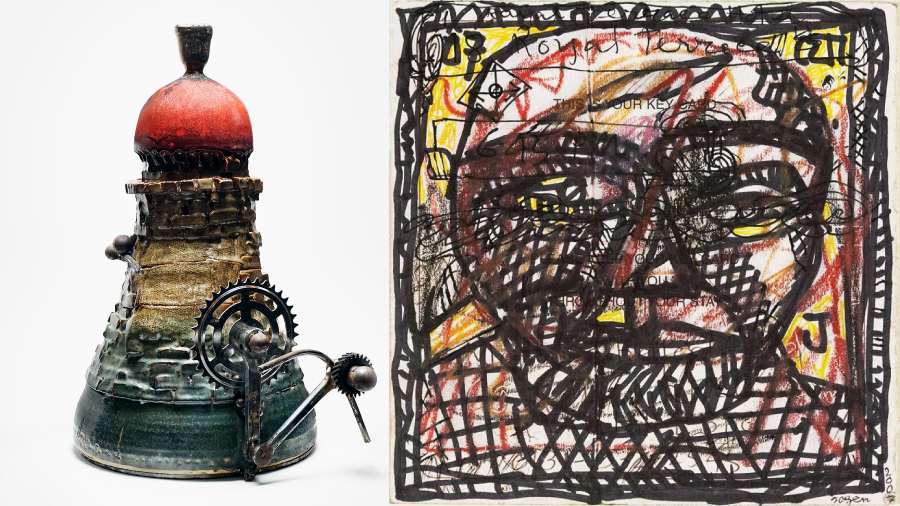Urban Identity (organised at the Harrington Street Arts Centre recently) was a mixed bag of nine artists. Among them was Partha Pratim Deb whose works are known for their humour and innovative exploration of a variety of media and material way beyond those accepted in the marketplace. His ducks in water were colourful and charming. His second work was a grim reminder of the pitfalls of urbanisation. Samir Roy’s smirking chimeras were hideous and caricaturish. But humour, too, gets hackneyed fast. High time Roy tried a different tack. His ceramic work held promise (picture, left). Arindam Chatterjee’s charcoal, ink and watercolour works were enigmatic and his figures were full of dark possibilities. Tina Nobis’s sculptures reminded one of Toby Jugs but tried hard to look quaint. The show could have been better curated.
Art Exposure’s exhibition, The Compulsive Act: Drawings by Jogen Chowdhury (on view till December 17), was held in two spaces on Mahanirban Road. Mostly recent works were exhibited, although some of them harked back to the early periods of his career. Chowdhury is still prolific, and instead of simple, fluid lines, he has tried his hand at cross-hatching, once again. Among his grotesque visages (picture, right), birds, and ornamental creepers are the huge lumbering bodies of pre-historic animals that seem to have tumbled out of dreams. His intricate arabesques recall Rabindranath’s doodles on his manuscripts and the poet’s idiosyncratic drawings that accompanied Se. Chowdhury has experimented with colour in a similar fashion, using felt pens and crayons to broaden the horizon of his creativity.
There is one small drawing from the period when he did a series of malformed human beings whose distorted physical traits symbolised the corruption that is rife in politics. The political parties may have changed but the work has lost none of its relevance. The violence in Gujarat impelled Chowdhury to create those powerful drawings that spoke out against barbaric acts of cruelty. The face with a huge fresh wound belonged to that traumatic period.










